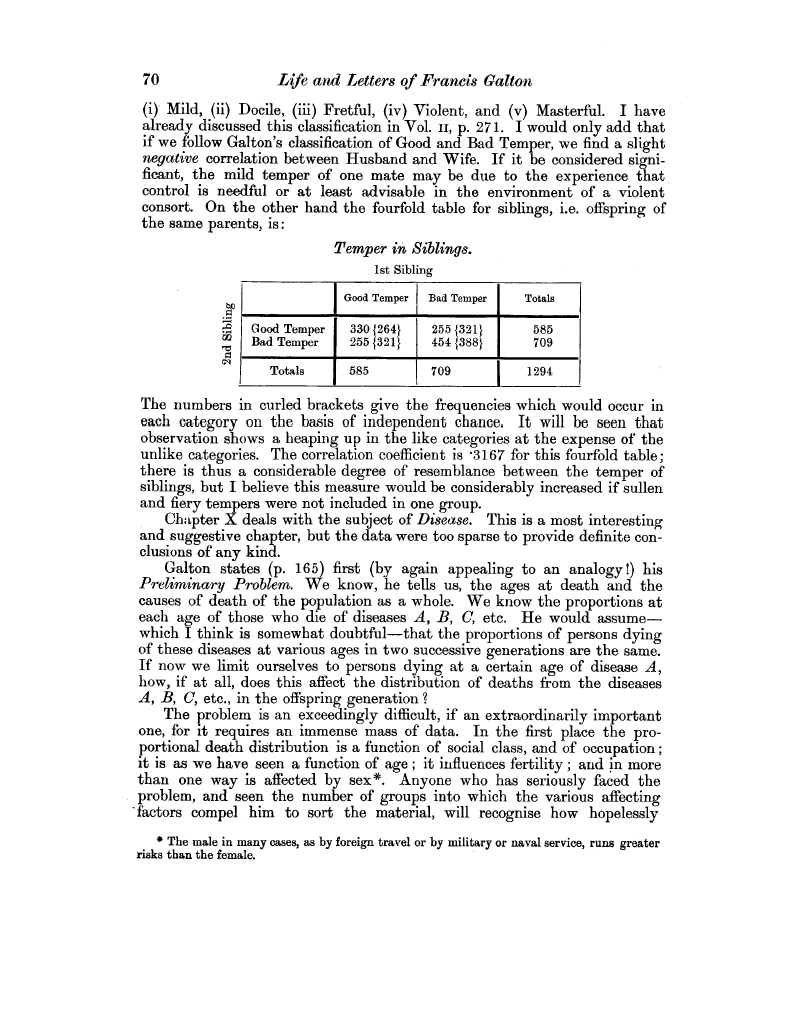| ||||||

OCR Rendition - approximate
70 Life and Letters of Francis Galton (i) Mild, (ii) Docile, (iii) Fretful, (iv) Violent, and (v) Masterful. I have already discussed this classification in Vol. ii, p. 271. I would only add that if we follow Galton's classification of Good and Bad Temper, we find a slight negative correlation between Husband and Wife. If it be considered significant, the mild temper of one mate may be due to the experience that control is needful or at least advisable in the environment of a violent consort. On the other hand the fourfold table for siblings, i.e. offspring of the same parents, is q a Temper in Siblings. let Sibling
The numbers in curled brackets give the frequencies which would occur in each category on the basis of independent chance. It will be seen that observation shows a heaping up in the like categories at the expense of the unlike categories. The correlation coefficient is •3167 for this fourfold table; there is thus a considerable degree of resemblance between the temper of siblings, but I believe this measure would be considerably increased if sullen and fiery tempers were not included in one group. Chapter X deals with the subject of Disease. This is a most interesting and suggestive chapter, but the data were too sparse to provide definite conclusions of any kind. Galton states (p. 165) first (by again appealing to an analogy!) his Preliminary Problem. We know, he tells us, the ages at death and the causes of death of the population as a whole. We know the proportions at each age of those who die of diseases A, B, C, etc. He would assumewhich I think is somewhat doubtful-that the proportions of persons dying of these diseases at various ages in two successive generations are the same. If now we limit ourselves to persons dying at a certain age of disease A, how, if at all, does this affect the distribution of deaths from the diseases A, B, C, etc., in the offspring generation? The problem is an exceedingly difficult, if an extraordinarily important one, for it requires an immense mass of data. In the first place the proportional death distribution is a function of social class, and of occupation ; it is as we have seen a function of age ; it influences fertility ; and in more than one way is affected by sex*. Anyone who has seriously faced the problem, and seen the number of groups into which the various affecting 'factors compel him to sort the material, will recognise how hopelessly * The male in many cases, as by foreign travel or by military or naval service, runs greater risks than the female.
|